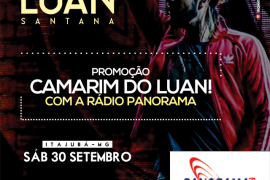[37] Two similar works from around 30 years before the publication of The Great Wave can be considered forerunners: Kanagawa-oki Honmoku no Zu and Oshiokuri Hato Tsusen no Zu, both of which depict a boat (a sailing boat in the former, and a rowing boat in the latter) in the midst of a storm and at the base of a great wave that threatens to engulf them. Intensity relates to how bright or dull a color appears. There was a specific color, called Prussian blue, that Hokusai reportedly utilized in his prints. "The Great Wave Off Kanagawa" Katsushika Hokusai - An Analysis It states Fugaku Sanjrokkei / Kanagawa oki / nami ura, meaning Thirty-six Views of Mount Fuji / Offshore from Kanagawa / Beneath the wave. Our gaze is continuously pulled by the current of curving motions created from the waves in front of us. With its bright and saturated hue, Prussian blue made landscape printing both possible and popular in Edo-period Japan. It is estimated to have been made and published around 1831. Galatea of the Spheres (1952) by Salvador Dal. Similarly, the wave is also depicted to the left, almost about to crash onto the shore where there are several figures standing. Principles of design: look at size, proportion and scale of the artwork and discuss the emphasis, movement and texture. Ukiyo-e prints are recognizable for their emphasis on line and pure, bright color, as well as their ability to distill form down to the minimum. Throughout Japans history, Mount Fuji was a site for pilgrimages and various deity venerations. Rosey Cheekes 123 11.8k Topan Akbar 76 6.5k Kendall Plapp 21 3.7k By utilizing contrast strategically, it will convey a sense of emphasis, or otherwise stated; it will emphasize a certain area in the composition. Is this an Early representation of a tsunami before they knew what it was ? Symmetrical refers to both sides being the same, or mirroring one another. In Fast Cargo Boat Battling the Waves, we see a boat with several figures in it struggling against the sheer steepness of the wave they are on. Ukiyo-e, which originated as a Buddhist term, means "floating world" and refers to the impermanence of the world. Art elements are placed in patterned arrangements to create an effect. Direct link to Brian Chidester's post Unfortunately, none is av, Posted 3 years ago. Woodblock printing was an enormously popular art form in the Edo period and the most advanced color-reproduction technology anywhere in the world. These can be seen in. Some ukiyo-e artists specialized in creating paintings, but most works were prints. It is also an active volcano. This is done by utilizing various techniques with paint, pencil, or pen on a canvas or piece of paper. Read also our Principles of Arts web story. The Great Wave off Kanagawa has been described as "possibly the most reproduced image in the history of all art",[1] as well as being a contender for the "most famous artwork in Japanese history". It is also important to note that Hokusai was also influenced by Dutch and French copper engravings, which inspired his techniques to include European styles of linear perspective. There was a greater sense of taking pleasure in various aspects of life, for example, the Kabuki theatre, Geishas, which were female entertainers and dancers, Sumo wrestling, literature and poetry, Japanese puppet theater (Bunraku), and various aspects related to sex, pleasure, beauty, and love.
St Rose Of Lima Church East Hanover Live "streamed" Mass,
All Of The Following Are Technology Considerations Except,
Victoria Secret Shelf Pulls,
Differences Between Ancient Greek And American Culture,
Steven Clark Rockefeller,
Articles T



